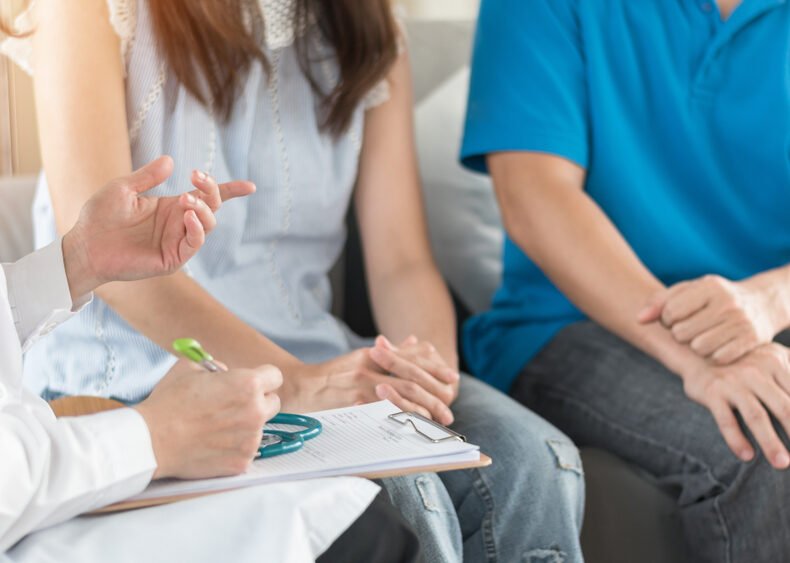When you’re going through in vitro fertilization (IVF), the day of the embryo transfer is a significant moment. It might feel like a dream finally coming true. Don’t worry if there are No Symptoms After Embryo Transfer. 10 to 15% of women don’t experience any symptoms for up to 13 days. After the transfer, the anticipation of whether it was successful can be nerve-wracking. While the success of pregnancy is not entirely within your control, there are a few simple things you can do to possibly improve the chances.
Pamper Yourself
After the transfer, treat yourself with a bit of care. Take a few days to relax and rest, giving the embryo time to potentially implant. While you don’t need to go on bed rest, it’s okay to take it easy. Consider this an opportunity to indulge in activities you enjoy, like reading, watching movies, or enjoying some humour. It’s not just a physical precaution; it can also help with the emotional aspects of the process. So, take a break, and don’t hesitate to delegate chores to others if it helps you unwind.
Keep Taking Your Medications
Don’t stop taking your medication without talking to your doctor, especially progesterone, which is crucial for sustaining early pregnancy. Progesterone aids embryo implantation and helps maintain the pregnancy. While the suppositories or injections might be inconvenient, they serve an essential purpose. Your doctor might also recommend baby aspirin, as some studies suggest it can improve implantation and pregnancy outcomes. However, it’s not suitable for everyone, and you should continue taking it if your doctor advises. Always follow your doctor’s instructions regarding medications.
Take Healthy Diet
Now is the perfect time to eat healthy. Include a variety of fruits, vegetables, calcium-rich foods, protein, B vitamins, and iron in your diet. Consider taking a prenatal vitamin to ensure you get essential nutrients even if you’re already eating well.
Start Taking Folic Acid Supplements Daily
If you’re not already taking folic acid, start now. It’s crucial for preventing certain birth defects. Your prenatal vitamin likely has the right amount (about 400 mcg), but check with your doctor if you need more, especially if there’s a history of certain issues.
Keep Your Uterus Warm
Some doctors suggest keeping your uterus warm and improving blood flow to promote implantation. To keep your uterus warm, wear warm clothing, drink warm beverages, and use a heating pad on your abdomen. Be cautious not to overheat—aim for a comfortable temperature. To increase blood flow, consider light exercises like yoga (unless advised otherwise by your doctor) and short walks. Remember, it’s essential to stick to activities that suit your preferences and avoid trying new things right after the embryo transfer.
Avoid Heavy Exercises
After an embryo transfer, it’s best to avoid lifting heavy weights or engaging in intense exercises. Your ovaries are likely still sensitive, so it’s important to protect them. While there isn’t a strict rule on how much to lift or twist, it’s recommended to steer clear of heavy lifting and strenuous workouts during this time. Stick to lighter activities to ensure a safe and healthy environment for the embryo.
Drink Lots Of Water
Drinking fluids is important because it helps cells stay hydrated. It ensures they function properly, including the cells in the endometrium. That’s why at this time It’s very crucial to take a lot of fluids.
Take Progesterone
Progesterone readies the lining of your uterus for a potential pregnancy, creating the best conditions for the embryos to implant.
Take A Break From Sexual Intercourse
It’s recommended to take a break from sexual activity. This is because intercourse can cause uterine contractions, which might affect the newly transferred embryo. It’s a temporary precaution to give the embryo the best chance of implanting successfully.
Don’t Take A Pregnancy Test Right Away
It’s tempting to take a pregnancy test immediately, but it’s best to wait a couple of weeks after the embryo transfer. It takes time for the placenta to produce enough hormones for the test to detect. Mark the days on your calendar and visit your doctor for a confirmed pregnancy test when it’s time.
Skip Baths Sometimes
Steer clear of tub baths, swimming pools, or beaches to lower the risk of potential infections. Opt for quick, warm showers and put aside bubble baths for a few weeks.
Don’t Ignore Mild Symptoms
After your embryo transfer, watch out for symptoms like abdominal pain, bloating, nausea, vomiting, or diarrhoea. These could be signs of ovarian hyperstimulation syndrome (OHSS), especially if you’ve been taking fertility drugs. While symptoms can be mild, they might worsen quickly in serious cases. If you experience sudden weight gain or severe belly pain, don’t hesitate—reach out to your doctor right away to discuss your symptoms and determine the next steps.
Conclusion
The period following an embryo transfer is a crucial phase in the IVF journey, filled with anticipation and hopes for a successful pregnancy. While some factors are beyond control, simple precautions and self-care measures can potentially enhance the chances of a positive outcome. It involves a delicate balance of physical and emotional well-being and adherence to medical guidance for a hopeful and healthy pregnancy. To know more about it, you can simply search for what the precautions to be taken after embryo transfer are.



